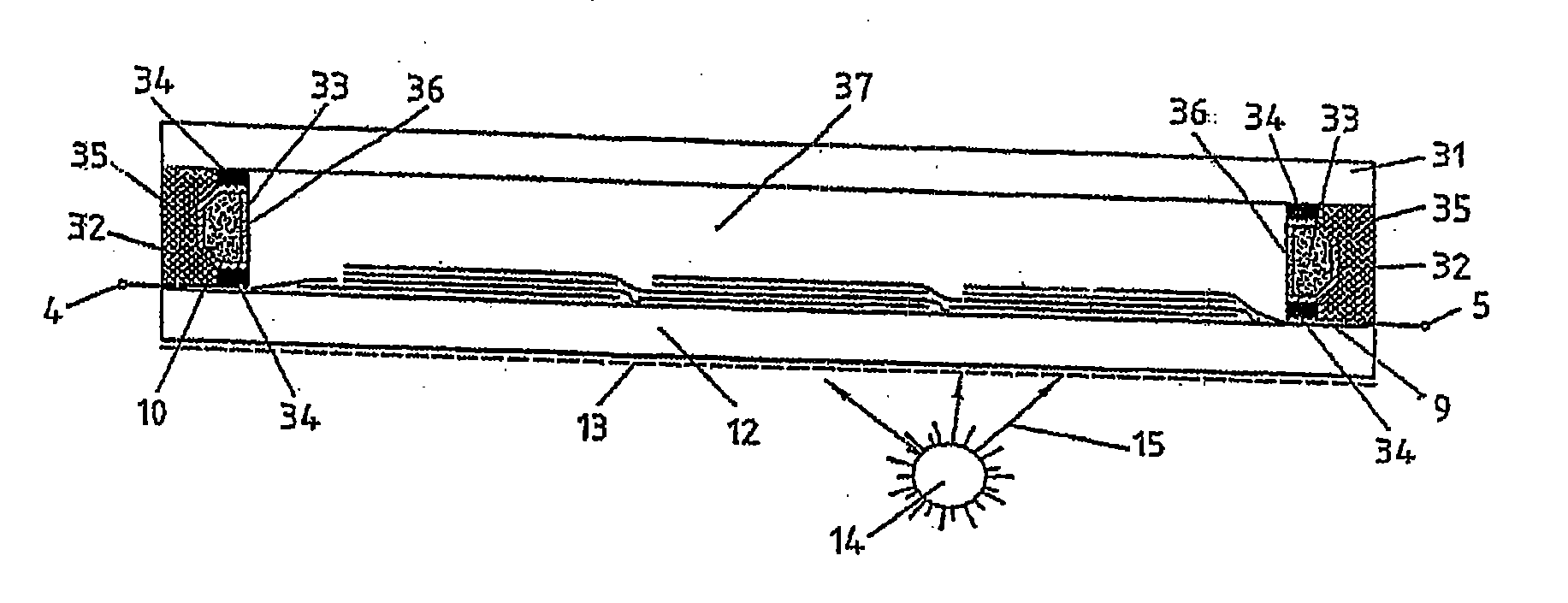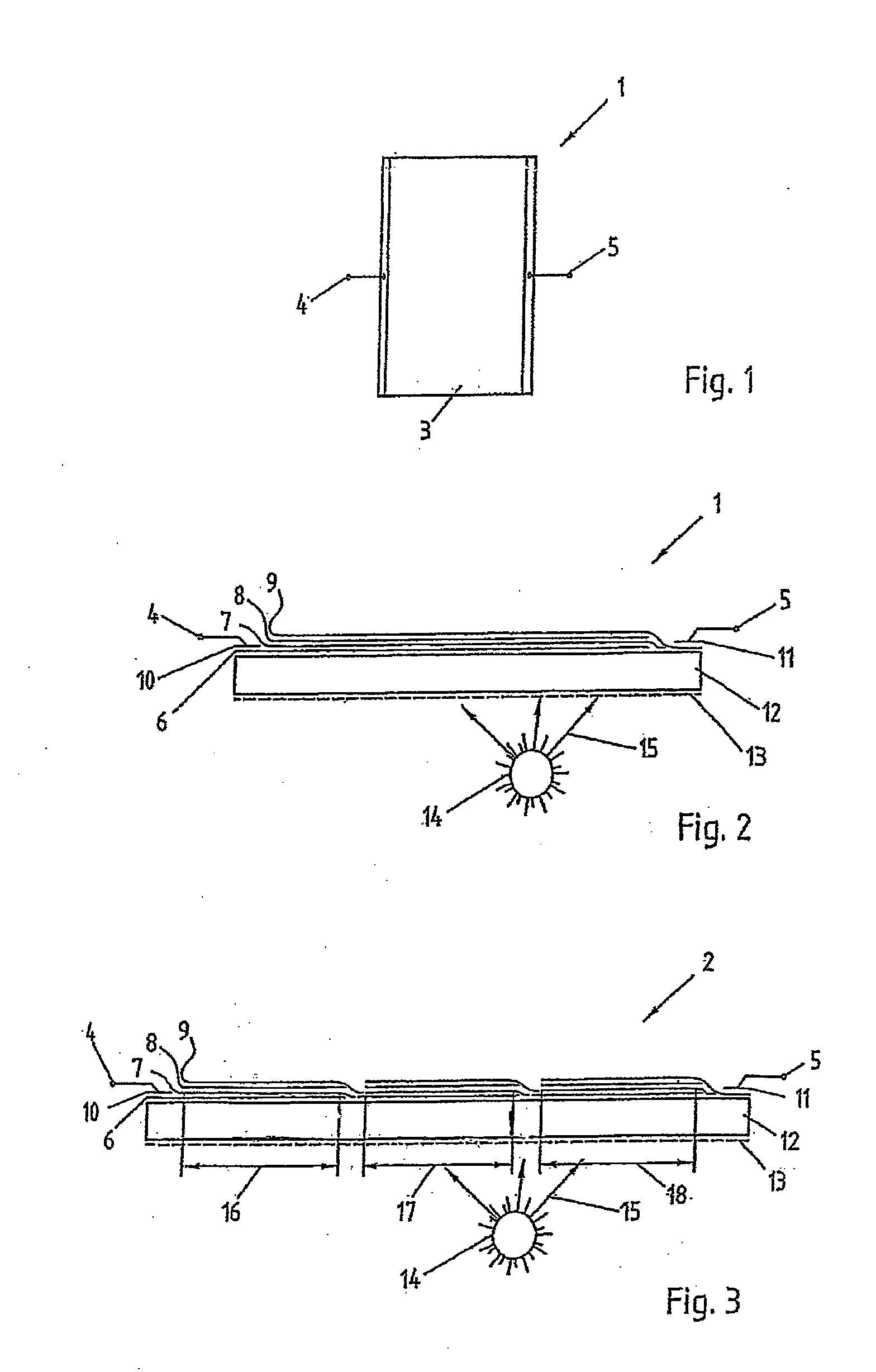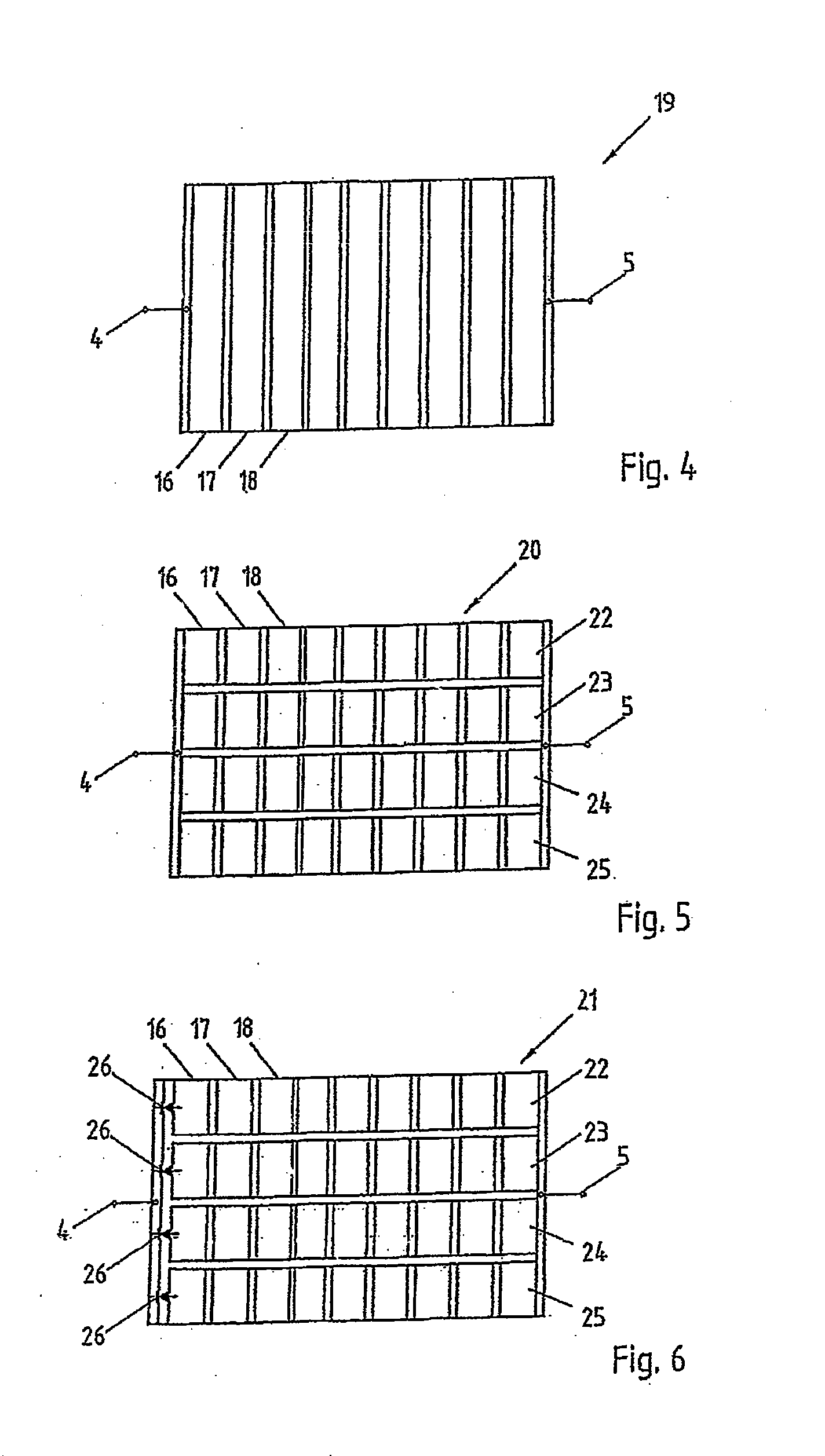Method of producing a thin film photovoltaic system, and a thin film photovoltaic system
a technology of photovoltaic system and thin film, which is applied in the direction of photovoltaic energy generation, photovoltaics, electrical apparatus, etc., can solve the problems of only achieving plasmon resonance and not efficiently contributing to charge carrier separation, so as to achieve cost-efficient production, facilitate the effect of carrying out and reducing production costs
- Summary
- Abstract
- Description
- Claims
- Application Information
AI Technical Summary
Benefits of technology
Problems solved by technology
Method used
Image
Examples
Embodiment Construction
[0020]FIG. 1 shows a schematic top view of a simple thin film PV system 1 based on a monocell having the photosensitive portion 3 and the TCO (transparent conductive oxide) terminal 4 and a metallic Schottky contact 5.
[0021]If n-doped TiO2 having a thin platinum Schottky electrode is selected as the semiconductor material, a voltage of about 0.4 V can thus be achieved at the terminals 4, 5. With a typical efficiency of 3 to 12%, such a monocell is not suited for large-surface formats, since usual TCO layers (ITO (indium tin oxide), ATO (antimony tin oxide), FTO (fluorine doped tin oxide), ZnO (zinc oxide), semitransparent metallic thin films of gold, thin films based on single-wall carbon nanotubes or silver-wire thin films) have comparatively high sheet resistances and only reach values of below 10 Ω / m2 at a concurrently lower transparency to natural light.
[0022]The TEC Glass #8 / 3 from the Pilkington Specialty Glass Products Company, Toledo, Ohio 43697-0799, USA, for instance, has ...
PUM
| Property | Measurement | Unit |
|---|---|---|
| Thickness | aaaaa | aaaaa |
| Thickness | aaaaa | aaaaa |
| Thickness | aaaaa | aaaaa |
Abstract
Description
Claims
Application Information
 Login to View More
Login to View More - R&D
- Intellectual Property
- Life Sciences
- Materials
- Tech Scout
- Unparalleled Data Quality
- Higher Quality Content
- 60% Fewer Hallucinations
Browse by: Latest US Patents, China's latest patents, Technical Efficacy Thesaurus, Application Domain, Technology Topic, Popular Technical Reports.
© 2025 PatSnap. All rights reserved.Legal|Privacy policy|Modern Slavery Act Transparency Statement|Sitemap|About US| Contact US: help@patsnap.com



